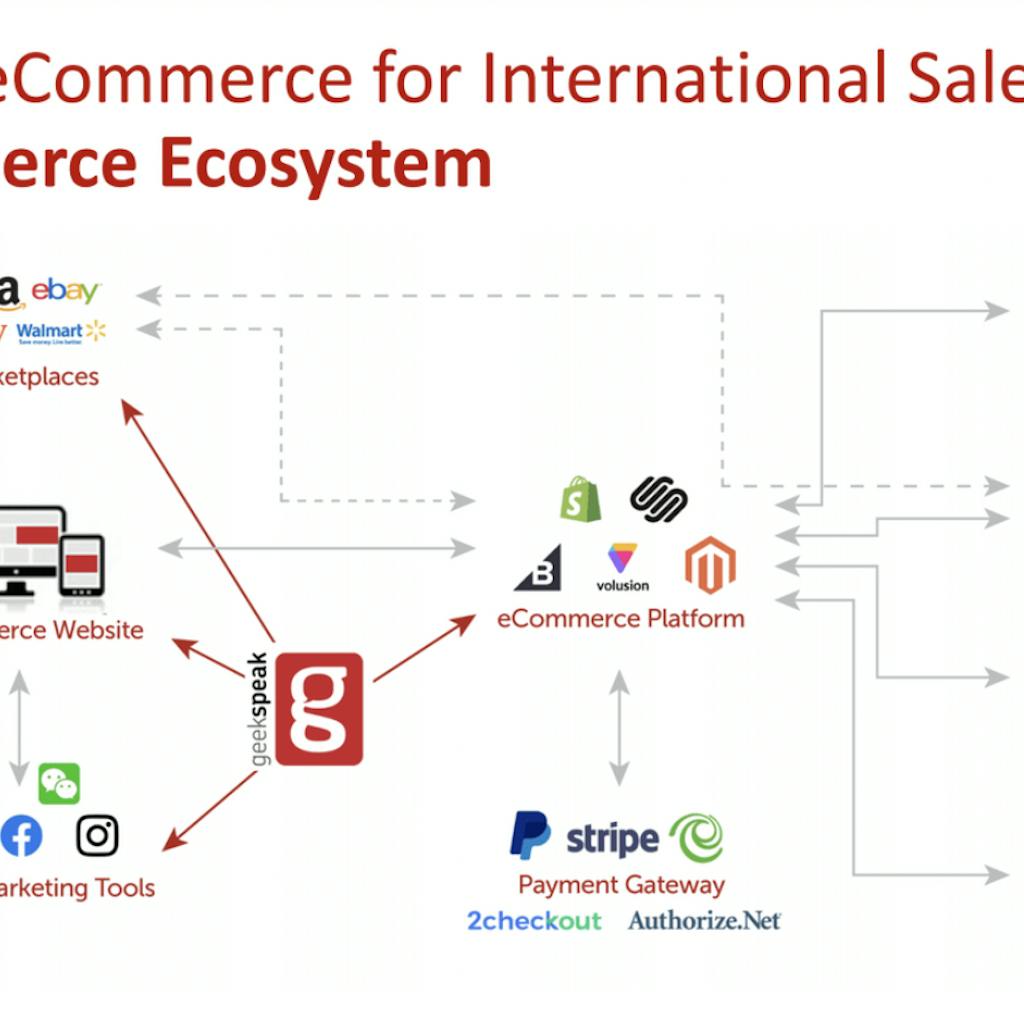I don’t know about you, but the amount of online shopping I do has become somewhat embarrassing over the past year. There’s seemingly nothing you can’t buy over the Internet, which is why for any company looking to expand beyond the U.S., e-commerce is a great way to start.
Global e-commerce sales grew by 28% last year, according to Statista, and by the end of this year there will be 2.14 billion global digital buyers, with e-commerce sales expected to account for 18% of all retail transactions.

With e-commerce, the barriers to entry are low, while the chances of success are high.
“Everyone’s looking to get a piece of the e-commerce retail business,” says Jim Okamura, partner at McMillanDoolittle, a Chicago-based retail consultancy, and co-founder of the Global E-Commerce Leaders Forum.
However, before you launch into e-commerce you need to decide where you’re going to sell your products. Let’s take a look at the options:
Direct to consumer, via your own website
Selling directly to consumers gives you freedom and flexibility with everything from marketing to pricing and shipping, making it easier to control perceptions. However, to be successful, “you need to invest in site build, content creation, marketing/advertising and more if you want to reach the same caliber of audience a marketplace provides,” says Megan Kimmerer, client success and communications manager at geekSpeak Commerce, an e-commerce services agency in Toronto.
Pros: 100% brand control; can gather customer data rapidly and easily
Cons: Steep learning curve; hard to acquire customers
Direct to consumer, via Shopify
Shopify, the Canadian subscription-based e-commerce site, “is the fastest growing and biggest e-commerce company,” says Okamura.
You can set up your own site quickly and easily within the Shopify software. You’ll have access to the company’s logistics network, international payments system, international cart capabilities, analytics and sales reports. “It really simplifies it for the brand,” Okamura explains.
“You could set up a store in an afternoon and just pay just $29 a month. It’s really compelling,” says Isaac Wanzama, founder and chief strategist for geekspeak Commerce.
Pros: Fast; inexpensive; access to Shopify’s tools and expertise
Cons: Less control — sites are created from a template
A big marketplace
Amazon is the best-known marketplace and an easy way to get started with e-commerce. You can build out your own store page and provide background information, product details, videos, social media links, inspirational photos, and more.
Pros: Huge customer base; Amazon takes care of international fulfillments
Cons: No brand experience control; Amazon takes a percentage of sales; can’t gather customer data
A foreign marketplace
There’s JD.com in China, Jumia (Africa), Bazar (U.K.), OTTO (Germany) and Bol.com (Holland). These smaller foreign marketplaces have grown significantly during the COVID pandemic, says Okamura.
These websites allow you “to enter a market in a controlled and cost-effective way,” says Wanzama. “These pre-built markets provide infrastructure, payments and delivery.”
Pros: Access to local customers of the marketplace; speed to market; can test brand awareness/equity/product
Cons: Lack of control; don’t own customer data and difficult to build relationships
Vertical marketplaces
NewEgg, Etsy, Zalando, Reverb, and TheRealReal are vertical online marketplaces dedicated to selling a certain type of product. They tend to attract serious shoppers who bring repeat business.
These marketplaces draw a specific customer who knows what to expect from this website, and there’s less competition with other brands. You can use a vertical marketplace as well as a multi-marketplace, suggests geekspeak’s Kimmerer, so you’re selling in both the niche and the larger markets.
Pros: Targeted customer
Cons: Narrower customer base
Social media
According to Digital Commerce 360, 72% of consumers reported that their social media consumption rose during the pandemic. It’s no surprise, then, that you can now sell directly through social media sites such as Facebook, TikTok, Instagram, or Twitter. These sites offer terrific opportunities to market your brand and for consumers to find you when they’re not necessarily shopping.
“Social commerce is where a lot of commerce is going to go,” says Wanzama. “Customers aren’t looking for brands to tell them a story; they’re looking for their peers to tell them about products.”
On top of the well-known social media sites there’s also Amazon Live and Shop Shops, where influencers can talk about products.
Pros: Free; easy to build awareness
Cons: Still in test mode in the U.S.; older generations may not trust or adopt social; lots of distractions

